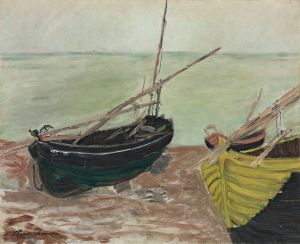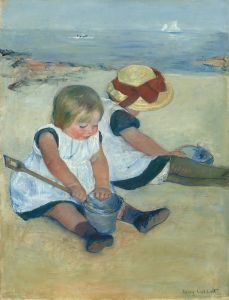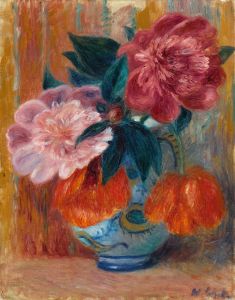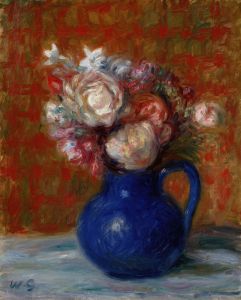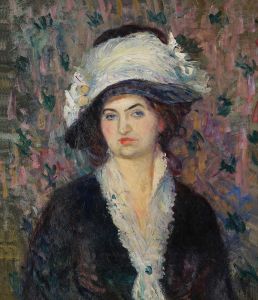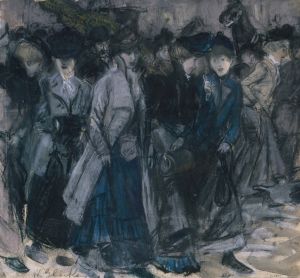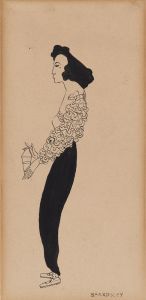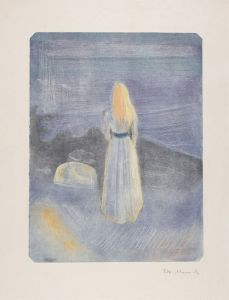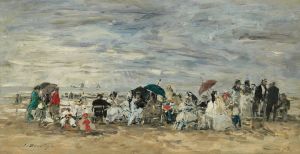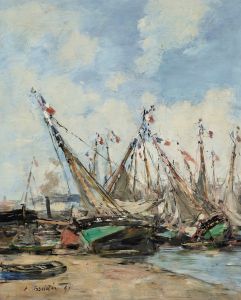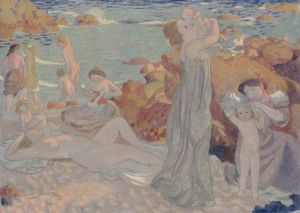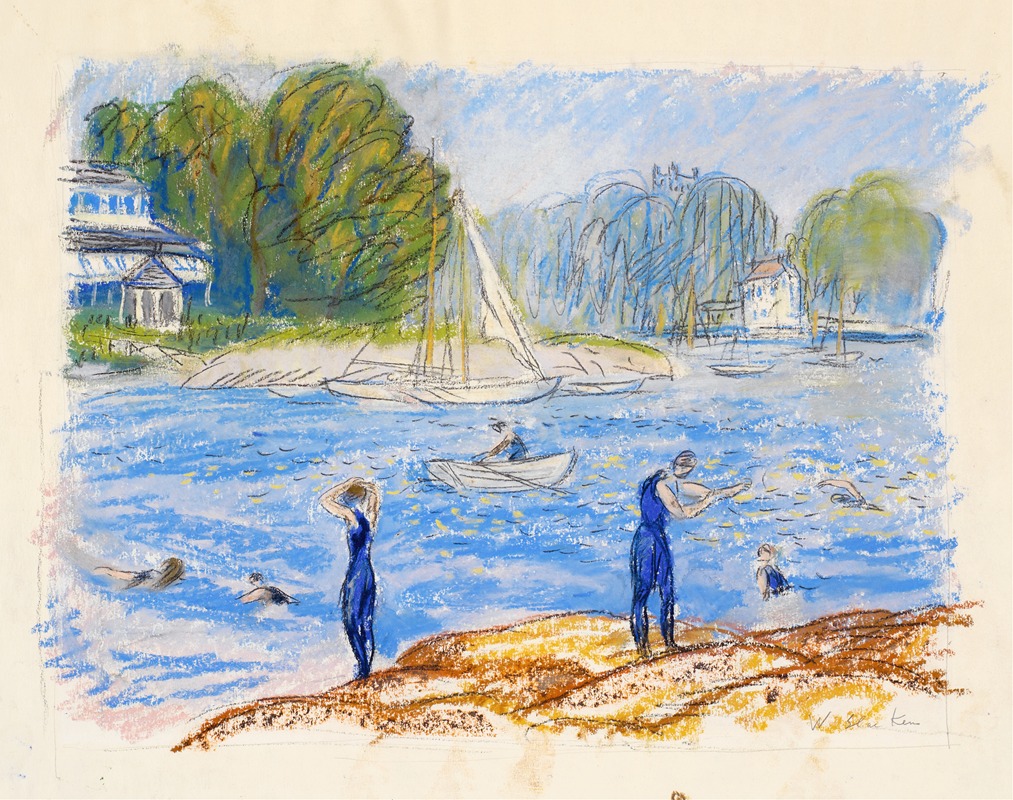
Bathers, Annisquam
A hand-painted replica of William James Glackens’s masterpiece Bathers, Annisquam, meticulously crafted by professional artists to capture the true essence of the original. Each piece is created with museum-quality canvas and rare mineral pigments, carefully painted by experienced artists with delicate brushstrokes and rich, layered colors to perfectly recreate the texture of the original artwork. Unlike machine-printed reproductions, this hand-painted version brings the painting to life, infused with the artist’s emotions and skill in every stroke. Whether for personal collection or home decoration, it instantly elevates the artistic atmosphere of any space.
"Bathers, Annisquam" is a painting by the American artist William James Glackens, created in 1915. Glackens was a prominent figure in the Ashcan School, a movement known for its realistic and unidealized depictions of everyday life in early 20th-century America. The Ashcan School artists often focused on urban scenes, but Glackens also had a keen interest in capturing leisure activities and the beauty of the natural world.
"Bathers, Annisquam" is an exemplary work that showcases Glackens' skill in portraying outdoor scenes with vibrant colors and dynamic compositions. The painting depicts a group of people enjoying a day at the beach in Annisquam, a village in Gloucester, Massachusetts. This area was a popular summer destination, known for its picturesque landscapes and serene coastal environment.
In the painting, Glackens captures the relaxed atmosphere of the beachgoers, who are seen lounging, swimming, and interacting with one another. The figures are rendered with a sense of spontaneity and movement, reflecting the casual and carefree nature of a day spent by the sea. Glackens' use of bright, bold colors and loose brushstrokes adds to the lively and joyful mood of the scene.
The composition of "Bathers, Annisquam" is carefully balanced, with the figures arranged in a way that guides the viewer's eye across the canvas. The artist's attention to detail is evident in the depiction of the water, sand, and sky, which are rendered with a sense of texture and depth. The interplay of light and shadow further enhances the realism of the scene, creating a sense of immediacy and presence.
Glackens' interest in capturing the essence of modern life is evident in this work. The painting reflects the social changes of the early 20th century, particularly the increasing popularity of leisure activities and the growing middle class's access to recreational spaces. "Bathers, Annisquam" is not just a depiction of a specific moment in time but also a broader commentary on the cultural shifts of the period.
The painting is also notable for its connection to the broader art movements of the time. Glackens was influenced by the work of the French Impressionists, particularly Pierre-Auguste Renoir, whose use of color and light had a significant impact on his style. This influence is evident in "Bathers, Annisquam," where Glackens employs a similar approach to capturing the fleeting effects of light and atmosphere.
Today, "Bathers, Annisquam" is recognized as one of Glackens' significant works, celebrated for its vibrant depiction of leisure and its contribution to the American art canon. The painting is held in the collection of the Museum of Art, Fort Lauderdale, which houses an extensive collection of Glackens' works, providing insight into his artistic development and the broader context of American art in the early 20th century.





